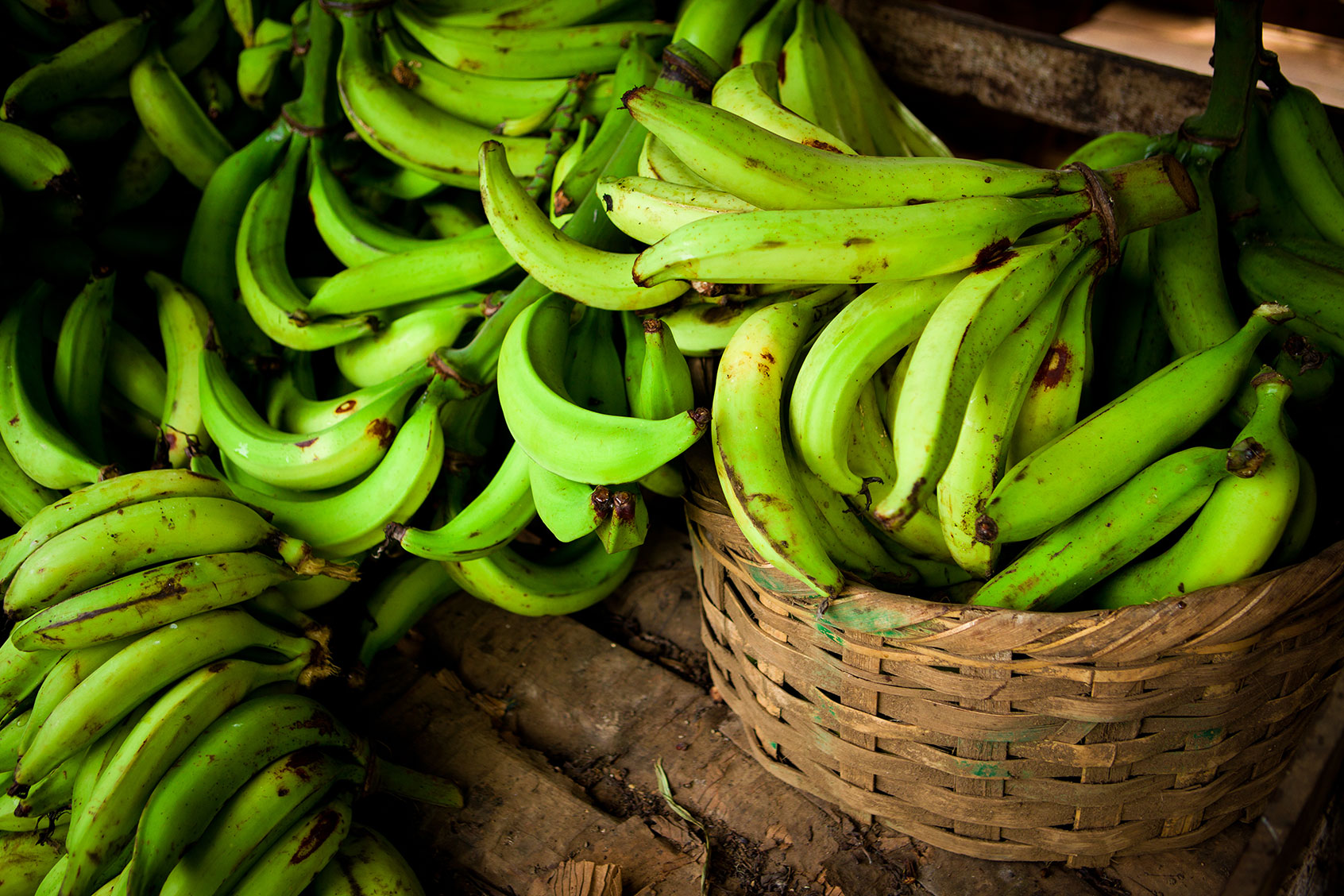Learning to fry plantains represents a coming-of-age ceremony for many young people across the African and Latinx diaspora. My Haitian grandmother officiated my first lesson, during a time when I so badly wanted to be a chef. I was in my first year of culinary class in high school and, after a few months, I realized that learning the art of this technique would not come from my chef instructors. While I adored my teachers, their identities presented roadblocks to a broader cultural exploration — whiteness permeated all aspects of my high school culinary curriculum, from the recipes to the techniques and even the equipment. But I knew that learning to fry plantains held just as much weight as perfecting the French mother sauces. Thankfully, I took comfort in knowing that my grandmother stood as a resource to teach me.
Fried plantains show up on every occasion in our community, with a variety of dishes. They’re added to plates packed with diri kole, Haiti’s national rice and beans dish and stewed chicken; pikliz, a spicy, pickled Haitian condiment, always involves banan peze or crispy fried green plantains. While the starchy disks come together within a few minutes, getting every step just right is crucial — especially the pressing. If the plantains are smashed too thin, they will be hard; too thick and you risk an undercooked bite.
It’s important to note my grandmother has taught me a few ways to flatten plantains: using two pieces of the green plantain skin, the back of a wooden spoon or the bottom surface of a pan. I’m thankful for her wisdom (it taps into her culinary innovation and tenacity to use what you have on hand), but my preferred method involves using a plantain press. This tool goes by many different names, depending on where you are — some Latinx countries call it a “tostonera,” and in my family’s home base, Haiti, it goes by “pez” — but its construction and purpose remain the same: two wooden slabs connected by a hinge, a practical way to flatten plantains before frying. (Even my grandmother uses one from time to time.)
You don’t know how many times I’ve messed up plantains. While seemingly simple, these starchy fruits (yes, fruits) can present genuine headaches, especially if it’s your first time making them. In my early days of frying up banan peze, the smashing part of the process always got me. When pressing by hand, you run more risk of messing up the shape and thickness of the plantain. Using a pez ultimately took the gamble out of the process for me. The combination of the pressure from your hand plus the hinge creates an environment for the two slabs to swing together effortlessly, yielding an impeccably smashed plantain every time.
A plantain press isn’t just a treasured tool for cooking, it makes a beautiful kitchen statement, too. One of my favorite views is that of my pez hanging on the windowsill, glistening in the sun. I recommend a few routes to getting one for your own home: First, scour local Caribbean, African or Latinx grocery stores or bodegas. You can also look towards craft sites like Etsy, where dozens of Black and Latinx artisans sell them. After using a plantain press for the first time, you’ll end up just like me — cooking fried plantains for breakfast, lunch and dinner.
Ultimately, getting plantains right is about more than striving for perfection, even though I admittedly spent years trying to get those starchy rounds to taste like my grandmother’s. The pez represents my commitment to carrying on the legacy of serving my loved ones and myself, deliciously fried plantains.



